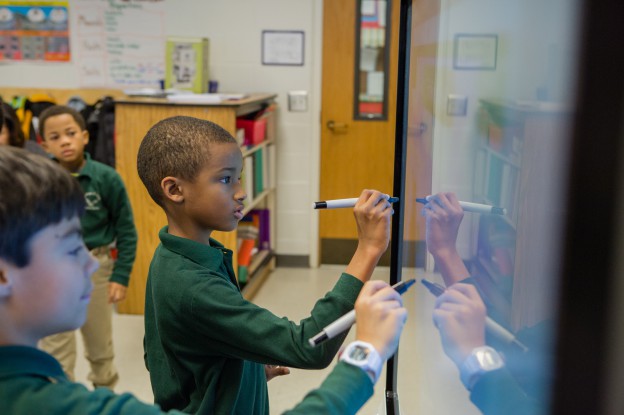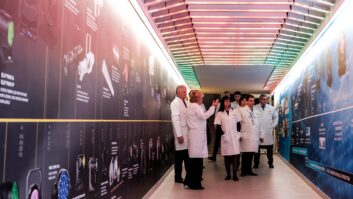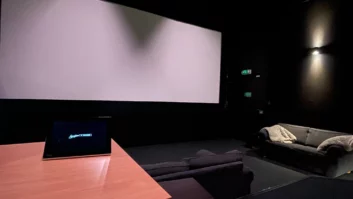
Technology’s true impact on learning is a much-debated subject in education. Presented with a ‘requires improvement’ challenge, Pheasey Park Farm Primary School became the subject of a real-life case study
The use of technology in the classroom environment is regarded by many people as having significant benefits for students and teachers alike. Depending on the types of technology and devices used, school budgets, teacher training and what the technology is being used for, one of the aims can be enhancing collaboration that can support individual learning. But just what are the benefits of having and using digital technology in the learning environment?
With this in mind, Don Passey, professor of technology enhanced learning at Lancaster University, supported by David Whyley, a learning technologies consultant with a 35-year track record in education, conducted a year-long study that explored the role that digital technology played in improving the performance of a single primary school – Pheasey Park Farm Primary School.
The challenge
Pheasey Park Farm Primary School in the West Midlands was placed into the ‘Requires Improvement’ category following an Ofsted inspection in October 2012. The category indicates that the school was underperforming and it was given the chance to improve. The Ofsted report found that the teaching quality of the school varied too much and was considered outdated. In addition, it was found that achievement in the subjects of English and mathematics was not high enough and that overall, lessons were dominated by the teacher, especially in Years 1, 3 and 4.
When a new head teacher was appointed in January 2013, it was found that information and communication technologies (ICT) were not being used to any great degree within the classroom environment to support teaching or learning. It was found that the school’s ICT room was being used as a storage room and that its existing interactive whiteboards were being used as traditional chalkboards or not at all. As a result, developing a strategy that would see ICT being integrated into the classroom became a priority in the school’s improvement plan.
The study began in 2014, when students were able to access facilities they had not previously used. This included the use of a SMART collaborative classroom for Year 4 and other digital technologies for the other age groups.
A new classroom environment
With the deployment of SMART technologies in the classrooms, the study focused on how the digital technology was being used, how technology training and professional development were integrated into a whole school change management plan, and on associated training and professional development in the whole school setting.
The research looked at the way in which SMART technologies were integrated with other technologies to involve, motivate and engage the major stakeholders in the management activities of the school, including teachers and staff, students, parents and governors.
After a full technology audit, SMART boards (interactive white boards) were deployed in each classroom, a collaborative classroom was created and several SMART tables were provided for the school and adjacent children’s centre. The SMART tables feature a multi-touch surface that encourages small group collaboration. In addition, cameras and a visualiser were given to teaching staff.
In March 2014, research evidence was gathered through the use of questionnaires and interviews, and this continued throughout the calendar year. Students, teachers and parents were all surveyed.
Evidence was gathered at the beginning of the study which included the creation of a form of baseline for analysis. This was done through questionnaires and interviews with students, parents and key school staff to identify what technologies were available and used prior to 2013 when the new head teacher took up her post. In addition, interviews and surveys were conducted with support personnel looking at the digital technologies, what training had been provided and future plans for use. Students, parents and governors were questioned on their perceptions of ICT use, both past and present.
Halfway through the study, further evidence was gathered through surveys with key school staff and parents. At the end of the study, key staff, support staff, parents and students were surveyed once again.
Additional information was also gathered – documentary evidence – in terms of the attainment of outcomes and changes in attendance throughout the period.
Academic improvement
One of the clearest outcomes of the study and inclusion of digital technologies in the classroom was academic improvement – especially in the subjects writing and mathematics. Looking at these subjects, the percentage of students achieving Level 4 and above improved dramatically. From 2012 to 2014, there was a five per cent increase in reading, a 21 per cent increase in writing and a six per cent increase in mathematics.
By late 2014, the school’s head teacher identified some specific outcomes of the study. These included the better use of resources and improved knowledge and skills on the use of them; improved staff confidence and motivation; enhanced team work between staff, pupils and parents; practice from the collaborative classroom being shared with other groups across the school; lessons seen as more visual and more exciting; and collaboration improving understanding. Lesson content and delivery were seen to be improved across the school as a whole.
Other results included: enrichment of teaching and learning in specific ways in specific classrooms; mathematics results improved most in the collaborative classroom environment; pupils gaining confidence, especially those who were less able in some subject areas; pupils gaining greater ownership of their learning; attendance improved so it was above the national average; pupils being seen to help each other more, and to share responsibility; success celebrated more; lessons being conducted at a faster pace; and boys’ attainment in mathematics being overtaken by that of girls.
The head teacher even went as far as saying that ICT had become so embedded that if it was removed, it would negatively affect both teaching and learning.
Responses from students indicated that there was greater satisfaction and more enjoyment in the learning environment as a result of the introduction and use of digital technologies. Levels of enjoyment – of being in the classroom, of the teaching and of learning itself – improved greatly, while reported levels of activities rose and stayed high. Pupils indicated they felt greater improvements in their progress, being more involved, wanting to attend school and doing more at home.
Students indicated that while the use of laptops and PCs remained the same, there was a slight increase in the use of interactive whiteboards and a significant jump in the use of mobile devices. Prior to the study, very few pupils reported using mobile devices such as iPads, whereas in 2014, this figure went up to 32 percent.
Evidence shows that learner enjoyment has increased and been sustained since 2012. That enjoyment is related to changes in learner experiences, arising from different activities deployed within classrooms. It is clear that a variety of activities within lessons are now in place and that learners are experiencing stimulating rather than passive interactions.
Professor Passey highlights: “The speed of change within this school has been really remarkable. There has been a dramatic and rapid shift, which clearly demonstrates that it is possible for schools to bring about significant improvements in a short space of time. Overall, this is one of the most positive outcomes of a study that I have ever seen, with very few negatives.”
Conclusion
The integration of ICT into the classroom environment formed a major part of Pheasey Park Farm Primary School’s improvement strategy. As a result, the school has been supported through external consultancy and internal digital leader posts. It has gained input from Steljes training, the suppliers of the SMART technologies and it has been provided with ICT facilities that have enabled the educational value of SMART products to be used within a flexible classroom environment and started to explore the deeper use of large screen interactive technologies. It has also begun to explore the educational benefits of the SMART tables.
At the end of the study, the following were identified: the value of the training product and input that was provided by external and internal agents; the types of teaching and learning that were being developed in all classrooms, including the collaborative classroom; the educational value of the technology products adopted and used in these ways; the continuing importance of large-screen interactive technologies deployed to support specific teaching approaches; and the educational benefits of collaborative tables.
Technology does have a role to play in education – of that there is little doubt. As technology advances, so does its use within the learning environment. What this study demonstrates is that there are clear benefits to having collaborative technology in the classroom. In this case, the rate of absenteeism dropped and there were tangible increases in academic achievement. However, it is not the technology alone that is responsible for the change within Pheasey Park Farm Primary School. It is the ways in which the technology was deployed, used and managed. In this study, improvement has been focused through collaboration, supported by external and internal consultants and agents of change, with teacher interaction and collaboration, and with learner involvement with a variety of approaches to engage them in collaborative, as well as independent, learning activities.
Research conducted by Professor Don Passey, University of Lancaster. All contents remain the property of Prof D. Passey and Steljes Ltd. © 2015







